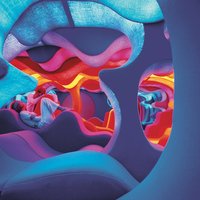Seminar (Bilingual - en/de), 2 SWS | 3 ETCS
Friedrich Nietzsche cunningly asked how much truth man can endure. Behind this question is the suspicion that man really hates truth. In other words: we love being deceived. It was in this sense that Blaise Pascal, the second great philosopher of the 17th century after Descartes, claims that life is nothing but a stable illusion. (Norbert Bolz, The Meaning of Surface)
Sullivans famous quote form follows function has often been misunderstood to imply that there cannot be any form without a functional justification (which was never Sullivans problem). In an unholy alliance between the ethics of puritanism, the spirit of capitalism, and the sense of modernity, heroic architectural modernism seemed to preach the dictum of absolute truths in expression as well as intention, of a sincerity of construction, instead of a construction of sincerity. Just as we nowadays dont believe in heroes anymore, post-modernist thinking has overcome the idea of an objective reality as such; replaced what was square with queer, the simple with the complex; and architectural post-modernism has unleashed the power of story-telling and thrown overboard all ideas of purity, along with, apparently, the architects own integrity as well.
But where are we now -- in a mixture of retro-modernism and neo-liberalism that makes whole generations of students search for the sublime in concrete, and the esoteric in the right angle? Has the stubborn yet heroic Fountainhead transformed into nowaday's social engineering mastermind just to design facades that were already invented in the 1930s? Or is this all just another grand masquerade?
He who knows how to live is superficial from the Depths!
Friedrich Nietzsche
In this class, we will look into many examples and aspects of artificiality in architecture and its cultural neighborhood. Trying to find out what was so sexy about the plastic dresses of the 1980ies, the shiny interiors of the space-age, the decorated sheds of Las Vegas, cyberspace, cyborgs, and many more, we will assign a topic and reading to each session. Each student will host one sessions debate. Most of the class will be in English language. Many of the texts are available in German, too, however, daring to debate is crucial.
Dipl.-Ing. Olaf Pfeifer M.A.
Wissenschaftlicher Mitarbeiter 2005-2012
olaf.pfeifer[at]alumni.tu-berlin.de

